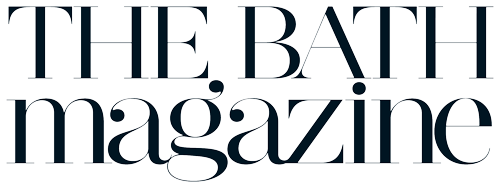This month’s walk follows riverside paths and quiet village streets to uncover Saltford’s rich industrial and architectural past – from copper mills and canal locks to railway relics, Georgian houses and a Norman manor, says Andrew Swift.
Starting point: Swineford Picnic Area / Swan Inn BS30 6LN
Public transport: First Bus 19 from Bath Bus Station stops opposite the Swan Inn.
Distance: 5 miles Approximate time: 3-4 hours
Accessibility: Generally easy, but with a narrow pavement along a main road at the start, rough paths and several flights of steps; some of the fields en route may contain cattle.
Map: OS Explorer 155 (which may not show the new Avon footbridge)
Facilities: Toilets at the Shallows, Saltford
Pubs: Swan, Swineford (swanswineford.co.uk); Jolly Sailor, Saltford (jollysailorsaltford.com); and Bird in Hand, Saltford (birdinhandsaltford.co.uk)
Saltford Brass Mill is open on the 2nd and 4th Saturday of the month until the end of October. Free entry (brassmill.com)

This month’s walk takes advantage of a newly opened footbridge over the River Avon to explore one of the most fascinating stretches of the Avon valley. As well as some superb riverside vistas, it takes in three 18th-century brass or copper mills – one of which is open to the public – two railways and the most historic part of the village of Saltford, including what may be the oldest house in the country. On top of all that it starts and finishes at a country pub and passes two others en route.
The starting point is Swineford – usually pronounced Swinford – which you can get to by car or bus. If coming by car, as you enter the village from Bath, turn right, just past the Swan Inn, into Swineford Picnic Area. Drive along a rough track to the car park (150m beyond the pub car park), walk back to The Swan and turn left along the pavement.

If coming by bus, get off opposite The Swan, cross the road and turn right along the pavement.
Carry on along the pavement for 550m, before crossing to follow a newly-opened pedestrian bridge across the River Avon. On the far side, head down steps and turn right under the bridge to follow the riverside path upstream.
After 150m, turn right alongside a fence, passing a sewage works opened by Bath Corporation in 1909. Fortunately, the path remains reassuringly rural, if a tad whiffy. A kissing gate (KG) leads into a field, where there may be cattle. Keep close to the fence and continue through another KG and on along a wide green path. At the end, a gate leads onto Mead Lane. Turn left and after 50m – just past a house called Copperlea – go through a gap in a hedge on the left to cross a car park to Saltford Lock.
This was one of six locks built in 1727 to make the Avon navigable as far upstream as Bath. On the far bank is the former Kelston Brass Mill, one of several brass and copper mills built alongside the river in the eighteenth century. Most of their wares were shipped out from Bristol to be bartered for enslaved people on the coast of Africa as part of the triangular trade.
Beside the lock is the Jolly Sailor Inn, opened at the same time as the navigation. Beyond the lock, the footpath runs past moorings before rejoining Mead Lane. After the houses on the right end, look up to see outcrops of blue lias rocks on the edge of the escarpment.
Carry on in the same direction and, after going under a railway bridge, you come to the Bird in Hand. Originally a pair of cottages, it became a pub when the Midland Railway built their line to Bath past it in 1869. The line closed in 1966, but the Bird is still very much in business.
Carry on up Saltford High Street, where venerable cottages lie tucked away behind more recent buildings. On the left, look out for the Brassknocker, with a datestone of 1747, which opened as a pub around the same time as the Bird. It has also been a grocer’s, a butcher’s and a post office.
Just past it, turn right into Queen Square, on the far side of which is Saltford Manor, said to be the oldest continuously occupied private house in England, dating from around 1160. None of the original structure can be seen from the front, but if you head through the churchyard and look back at the end, you can glimpse, over the hedge, a Norman window and other medieval fabric.
The demure tranquility of the church gives no hint of its troubled history, yet it was so knocked around in the Civil War that much of it had to be rebuilt, after almost two centuries of semi-dereliction, in the 19th century. Parliamentary soldiers also carried away and defaced the font, which was discovered years later in use as a cattle trough on Lansdown. Perhaps the most remarkable thing in the church, though, is the grim memorial in the porch to Frances Flood’s feet.
Head back through Queen Square and turn right uphill. At 18 High Street, on the corner of Homefield Close, was the Railroad Arms Beerhouse, opened when the Great Western Railway was being built through the village. Its attic also served as a dormitory for around 20 navvies.
Carry on up the High Street to see two grand Georgian houses – Saltford House, with a datestone of 1771, and Tunnel House, bought by Brunel in 1836 so that he could build a tunnel beneath it.
Returning to the former beerhouse, head along the alley beside it. After 200m, when you come to a footpath on the left, turn along it. Go through a KG at the end, turn right and head along a footpath to the right of a house called The Ridge. After 50m, turn left and follow the path as it turns right down a few steps, where there are views down to Kelston Lock and Weir. Carry on in the same direction before following the path as it curves down steps to the road, where you turn left.
A little way along is Saltford Brass Mill, where brass was first made in 1721. Production ceased in 1924, but restoration of this extraordinary survivor got under way in 1995 and it is now open to the public. Carry on along the Shallows, where tree-shaded benches alongside the river are an ideal spot to take a break.
After passing the Bird, turn right, but, instead of going under the railway bridge, head up steps in the pub car park and turn left along the cycle path along the old line – keeping a look out for bikes. After about 400m, you will notice, on the right, what looks like a stone wall but is in fact an outcrop of Lower Jurassic rocks recently uncovered by community volunteers (ST687678).

After another 700m, you come to Avon Riverside Station, beyond which the preserved Avon Valley Railway shares the trackbed with the bikes. Carry on across a bridge over the Avon before heading left along a path curving down to the river. Just before a landing stage, turn left along a path under the railway and carry on through a KG to follow the riverside path back to Swineford.
Just before you reach the Swan Inn, look to your right to see the former Swineford Copper Mill, whose early 18th-century buildings are largely hidden by more recent structures.
Andrew Swift has written books such as On Foot in Bath: Fifteen Walks around a World Heritage City (akemanpress.com).

